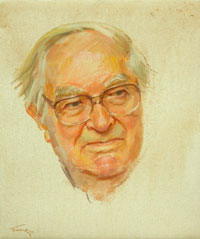Cambridge in Words and Pictures
One of the fine collections within the University’s Special Collections is the Cambridge collection, consisting of 600 volumes when it was purchased by the University from Dr Pierre Gorman CBE (1924-2006) in 1994. The collection contains books, manuscripts, prints and other material relating to Cambridge, the city, the county and the University.
Dr Gorman continued to generously donate to the collection up until his death, including a large collection of images of Cambridge. He also documented an extensive bibliography of the collection, which included books on Cambridge found in other parts of the University of Melbourne collections. The bibliography was published in 2008 and lists around 3000 items, published from 1568 to the present day.
For more information on this beautiful collection see www.lib.unimelb.edu.au/collections/special/collections/rarebooks/camb.html
Above (clockwise from top left): Cambridge, by Ruth Mellanby, London: Blackie & Son, [1951]; ‘Corpus Christi College, Cambridge University Almanack’, 1826; ‘Cambridge’, published by J. Mawman, 1821, hand-coloured aquatint with engraving; Special Collections, University of Melbourne Library.








